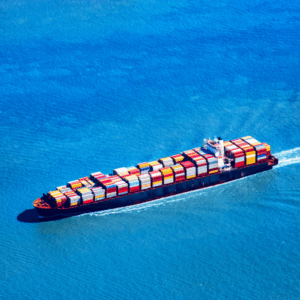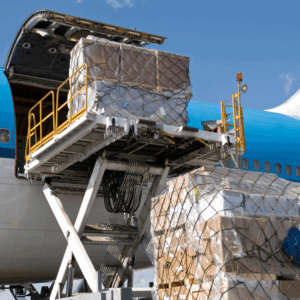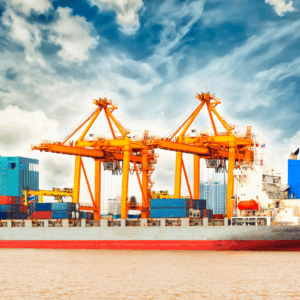
Infrastructure and Regulation in International Air Trade
How the Shipping Industry Is Evolving in Transatlantic Air Space
Today’s shipping industry is shaped by factors that go beyond basic logistics. Over recent years, the requirements for exporting and importing goods have been significantly influenced by security protocols, technical regulations, and changing global demand. In this context, shipments between the U.S. and Italy have emerged as strategic routes in international shipping trade. Companies operating under traditional models now face an urgent need to adapt to digital environments that enable real-time tracking, digital documentation processing, and direct integration with customs systems. These tools help streamline cargo flows, prevent operational errors, and ensure that every shipment complies with both origin and destination standards.
The Importance of Meeting TSA Standards in Air Cargo
In air freight and logistics services, adhering to TSA guidelines isn’t optional; it’s critical to maintaining operational continuity. The Transportation Security Administration enforces strict criteria for handling, inspecting, and documenting air cargo. These include certification procedures for all parties involved in the logistics chain, ensuring there are no weak points in shipment security. For companies exporting from the U.S. to Italy—or importing in the reverse direction—understanding and applying these protocols is essential to delivering secure and reliable services. A logistics operator’s ability to align with these standards often determines whether a service experience is smooth or hindered by regulatory friction.
Customs Digitalization with ACE
Modern air cargo management heavily relies on automated customs communication systems. The advanced electronic platform used for pre-arrival notifications and cargo release enables logistics agents to transmit all shipment data before the cargo’s physical arrival. This integration accelerates clearance, reduces inspection times, and enhances shipment traceability. Proper implementation of these procedures ensures that digital documentation is correctly structured and formatted to meet official regulatory requirements, avoiding delays or rejections. In this environment, logistics providers must understand how to format data, use appropriate coding, and coordinate with government systems to ensure a seamless flow of cargo across borders.
Critical Considerations Under the Federal Hazmat Law
Compliance with the Federal Hazmat Law is essential for any air freight operation involving materials classified as hazardous. This legislation requires all participants in the logistics chain to implement rigorous identification, packaging, labeling, and documentation procedures. Failure to comply can result in legal penalties, seizure of shipments, and reputational harm. For exporters and importers operating between Italy and the United States, applying this law goes beyond knowledge—it requires integrating automated processes that verify cargo classification, validate special handling needs, and ensure each step is traceable and digitally documented. This structure not only protects the operator but also safeguards the cargo and the entire air transport system.
Sustainable and Operational Strategies in Air Freight Logistics
Sustainable Supply Chain Management in Air Cargo
A systematic review of sustainability in global supply chains reveals a critical truth: sustainability is no longer optional. In the world of air freight logistics, this means designing shorter routes, reducing void space, using recyclable packaging, and fully digitizing documentation. This shift goes beyond environmental intentions—it leads to reduced resource use, lower hidden costs, and improved customer satisfaction. Companies shipping between Europe and the Americas must rethink their logistics processes through this lens. Full shipment traceability—from origin to destination—enables the accurate measurement and mitigation of environmental impact, facilitates better planning, and promotes adherence to global corporate responsibility standards. As a result, shipping trade becomes not just more efficient, but also more ethical and aligned with today’s market demands.
Digitalization and Automation of International Logistics Chains
One of the pillars of modern logistics in the shipping industry is the digitalization of supply chain workflows. Thanks to advanced platforms, users can obtain quotes online, track shipments in real time, upload documents to the cloud, and receive live alerts. This level of automation not only speeds up processes but also reduces human error, limits dependency, and provides enhanced operational control. In the context of air freight and logistics, this means that strategic decisions are driven by data, with complete visibility into cargo capacity, estimated times, and compliance requirements. Centralizing logistics management on a digital platform creates a seamless user experience, minimizes friction, and improves productivity across the board.
Frequently Asked Questions
What does ” missing documents” mean?
This status indicates that the shipment is missing essential export documentation required by customs and the carrier. These documents typically include the commercial invoice, packing list, and a complete export declaration. Without them, cargo cannot be cleared or exported, resulting in significant delays and disruptions. Shippers are responsible for uploading these documents in advance through the digital platform to ensure uninterrupted processing and avoid hold-ups during international air freight operations.

For international small parcel shipping, pallets are not required, as shipments are treated as loose cargo. The packaging must consist of high-quality corrugated boxes. For better product protection, it’s recommended to use the box-in-box method, especially for fragile or high-value items. Shippers should use enough internal packing material to fill the space and prevent movement during transit. Boxes should be sealed using pressure-sensitive tape and labeled clearly on the top surface for accurate scanning and handling during the air freight process.
What is the maximum limited liability for international small parcel shipments?
ExFreight offers a standard limited liability of up to a specific amount for each international small parcel. Shippers have the option to purchase additional insurance based on the declared commercial value of the goods. This added protection is particularly advisable for high-value or sensitive shipments. Keep in mind that claims for visible or hidden damage, loss, or missing contents must be reported within a specific time frame and formally filed within the international air freight claims window to be eligible for compensation. A deductible also applies to all claims.
Shipping air freight between Italy and the United States requires far more than just selecting a carrier. It involves navigating a complex and evolving landscape that includes regulatory frameworks such as TSA compliance, electronic customs processes like ACE integration, and safety standards governed by the Federal Hazardous Materials Law. Companies engaged in the shipping trade must also consider the environmental impact of their operations and adapt to a sustainable supply chain model that emphasizes digitalization, route optimization, and eco-friendly packaging.
Modern air freight logistics is no longer a siloed or manual operation—it is an integrated, data-driven, and fully traceable process that demands both strategic planning and operational discipline. Compliance and efficiency are not mutually exclusive; in fact, they enhance each other when supported by digital platforms like those provided by ExFreight.
The ability to obtain online shipping quotes, track shipments in real time, and automate document submission positions your business for agility and global scalability. Whether you’re shipping from Italy to the US, shipping to Italy from the USA, or moving cargo across Europe and North America, aligning with professional freight services ensures compliance, speed, and sustainability.
Companies that understand and implement these frameworks won’t just ship products—they’ll lead transformation in the global shipping industry. With the right tools and partners, each shipment becomes more than just a delivery—it becomes a strategic move toward growth, trust, and competitive advantage in global trade.





Leave A Comment
You must be logged in to post a comment.